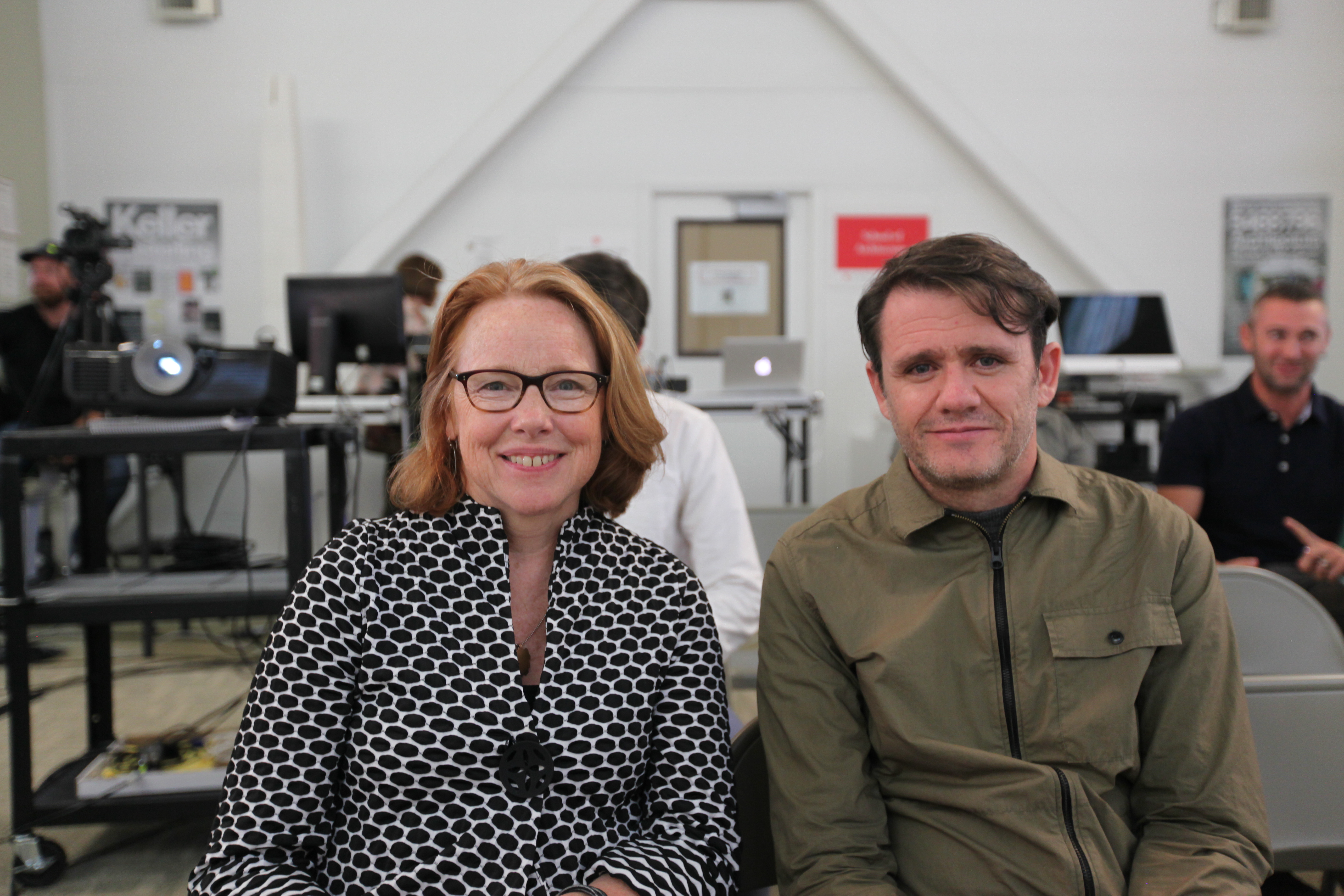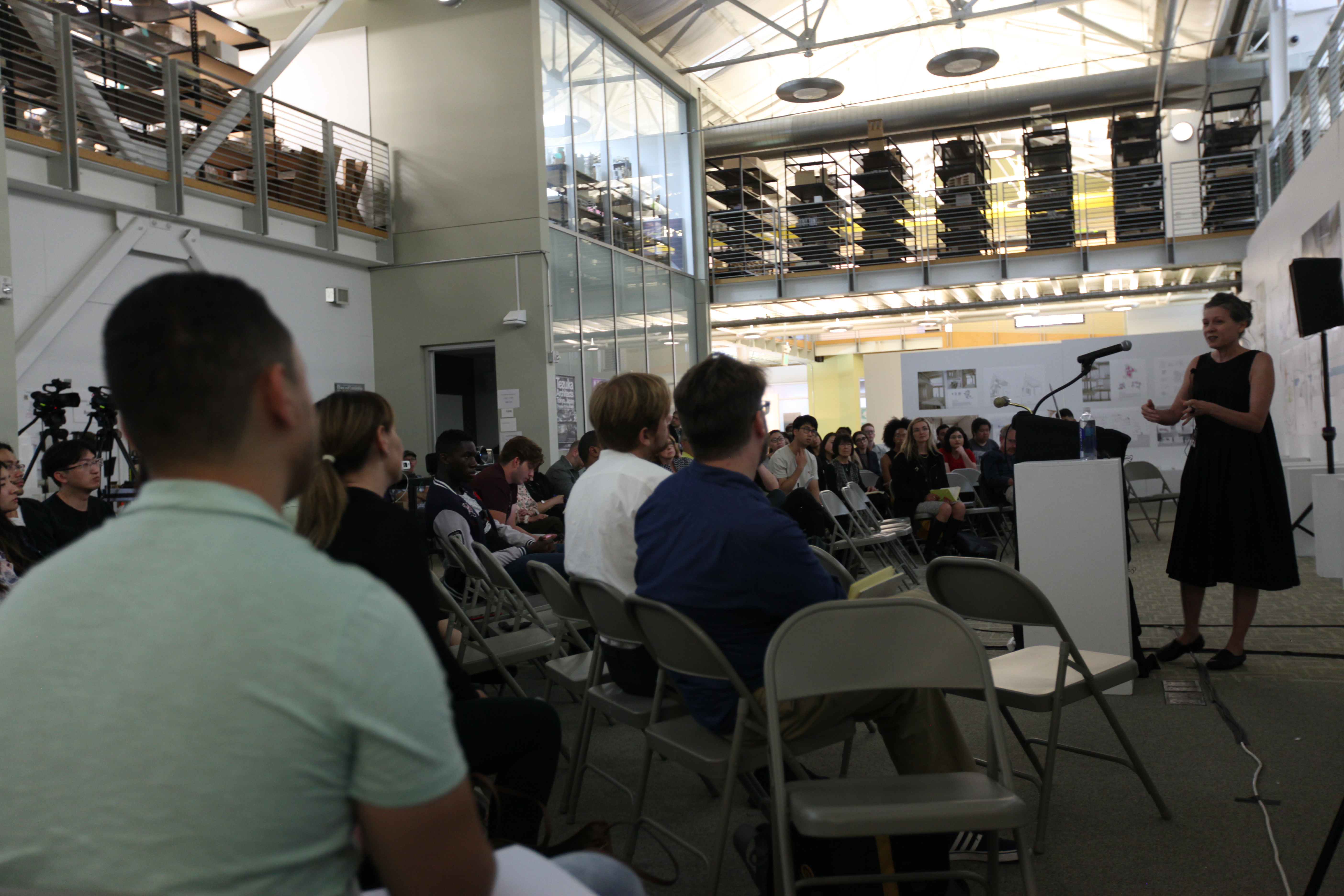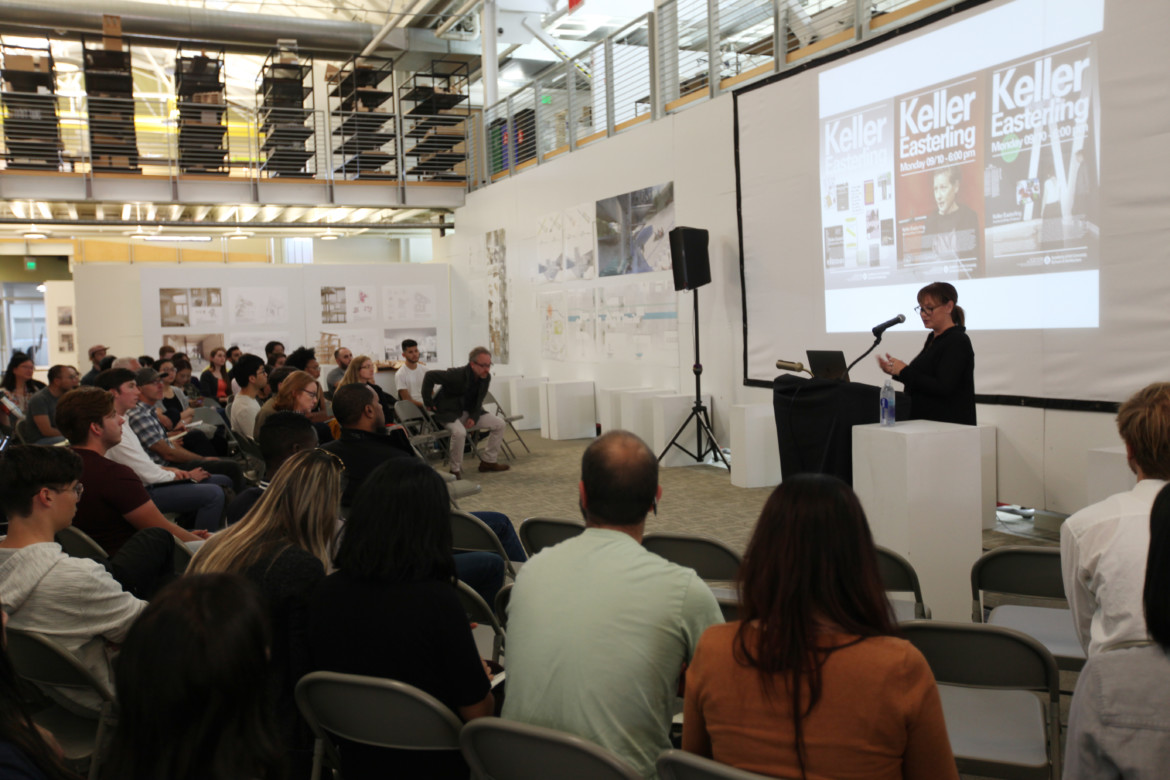Keller Easterling kicks off ARH Fall Lecture Series
By Erasmo Guerra
Keller Easterling—architect, writer and professor at Yale University—kicked off the fall lecture series at Academy of Art University’s School of Architecture (ARH). Her talk on September 10 focused on the subject of her most recent book, “Medium Design.” Or, as she described it to those in the audience unfamiliar with her work: “I’m looking with half-closed eyes at the urban world, looking at buildings with shapes and outlines—but also the rules and regulations in which those buildings are suspended—a kind of medium design.” She went on to explain that this “medium” could be described as a network, or system, of infrastructure, ecology, information and the built environment.
The lecture was part of the 15th Annual Architecture + the City Festival, presented by the American Institute of Architects, San Francisco (AIASF) and the Center for Architecture + Design. Taking place in San Francisco every September, the festival theme this year was “Future City.”

Lecture attendees (L–R) Jennifer Asselstine, ARH undergraduate director, and Eric Reeder, ARH studio faculty. Photo by Erasmo Guerra.
The Easterling lecture also marked the opening of the ARH student exhibit “Examining Future Urban Conditions,” addressing city growth and development as both a global and local phenomenon. Mark Mueckenheim, ARH graduate director, said the student work “examines political, technological and environmental implications of future urbanism.” (The exhibit, which was on view at 601 Brannan, closed September 14.)
Academy ARH students who attended the lecture seemed especially attuned to Easterling’s architecture-as-social-activism message.
“As architects, we are given a unique platform to embed change in our communities,” Raul Higuera, a third-year student in the B.Arch program said after the talk. “So, there’s a responsibility to balance issues of the environment, politics and people. What good are you impacting on a city with your design?”
Olga Bogatova, a second-year student in the M.Arch program said, “I liked how Easterling explained existing problems and how we as architects can effect change.” A native of Russia, Bogatova added, “It’s applicable to every country.”

Photo by Erasmo Guerra.
Kenta Oye, a fourth-year B.Arch student admitted that the talk “reflected the larger discussions we have in our studios and classes about urbanism.” Still, it was a lot to take in. He said, “I was writing down every second or third word, talking about loops and binary thinking.”
Oye pointed out that, while the lecture echoed familiar academic dialogue and debate, he said the series provided an opportunity for students to develop “a professional attitude” and a chance to engage first-hand with distinguished guests from the industry.
Nikitha Yedidha, a second-year student from India in the M.Arch program agreed. “It’s a privilege to hear a famous architect speak,” she said.
